Lipinski wins Mini-Transat La Boulangère
Published on November 14th, 2017
(November 14, 2017; Day 13) – If you needed proof about how well you can control and understand your boat, you just had to sit back and watch the last miles of Ian Lipinski’s race this morning between the islet of Cabri and the finish line of the Mini-Transat La Boulangère.
After a final gybe, the skipper of Griffon.fr hurtled along under large spinnaker before opting for a last change of spinnaker just a few miles from the line. Mastery, wisdom and a hint of panache proved to be the winning cocktail for the sailor from Lorient, Brittany.
Never before has a racer won in the production boat category and then repeated his win in the prototype category two years later. Following on from Sébastien Magnen on his prototype Karen Liquid in 1997 and 1999, Ian Lipinski has become the second double champion of the Mini-Transat La Boulangère.
On this occasion, Ian Lipinski had the time to savour a victory, which he’s patiently built bit by bit over the past four years or so. Arriving in the Mini circuit in 2012, he showed just what he was made of by securing a brilliant third place in the Les Sables – Les Açores – Les Sables race. The Mini-Transat 2013, which resulted in a capsize offshore of Portugal, didn’t put paid to his determination.
Indeed, the following year, he put together a winning project with the help of the Ofcet yard. With every race, he transformed his production boat into a formidable winning machine and rounded off his year by snatching victory in the first leg of the Mini-Transat 2015. During the second leg, Julien Pulvé secured the top spot, causing Lipinski to break into a cold sweat before ultimately bringing home the win in the overall ranking.
From that moment on, to remain in the Mini circuit called for a winning project. Thanks to his partner and the acquisition of the Maximum designed by David Raison and built by Davy Beaudart, Ian Lipinski knew that he was placing the bar very high. Boasting the best boat on paper, he had to produce a performance that lived up to expectations.
For two years, none of the races on the Mini circuit escaped his clutches. From 2016, despite very scanty competition in the prototype, Ian participated in every one of the events, be they double-handed or solo, in a bid to fine-tune his machine and learn to control her.
To do this, Ian did not hesitate to put together an entourage comprising the top specialists of the sport, such as Thierry Fagnent, the director of the AMCO yard, a master creator of composites, where his prototype underwent a general overhaul with a particular focus on her appendages, as well as Tanguy Leglatin, the coach from the Lorient Grand Large training centre, who has a knack for transcending the potential of his young protégés.
He arrived at the start of this Mini-Transat La Boulangère in tip-top condition. Designated the race favourite, he held rank to perfection.
Under pressure?
“Paradoxically, I didn’t feel under pressure from the competition during this second leg. Fairly rapidly, my direct rivals Erwan (Le Mené) and Arthur (Léopold-Léger) ended up crashing out of the race for final victory. Once I was past the Cape Verde islands, I just had to keep an eye on my gear and manage my race. Now, on a prototype, the stress is constant. There is always the fear of breakage. After Cape Verde, there were very crossed seas and you had to be very careful.”
A racing incident
“Whilst we were sailing along the coast of Morocco, I had an incident, which could have been a lot more costly. In the middle of the night, I spotted a fishing boat around twenty metres or so away. I decided to get well clear of it, but it wasn’t enough as I ended up getting caught in a net, which brought the boat to a complete standstill. I dumped my spinnaker and in so doing I ripped it, at which point it felt like the whole story of my race was unravelling. It was the spinnaker that Davy had torn before he retired on this same boat. I got out of it somewhat miraculously by letting the boat slip along the length of the net to its far end. Aside from the spinnaker, I broke nothing else in this story. I got away with it, aside from three hours of sewing.”
The damage suffered by his adversaries
“From the moment my rivals ended up out of the race, my primary focus was on managing my race. From time to time, the little devil on my shoulder pushed me into speeding, whilst the little angel on my other shoulder called on me to play for time. The situation was a little frustrating for a competitor, all the more so given that I never felt under threat from my other adversaries. The only one who was coming dangerously back into the fray was Romain Bolzinger, but at the pace he was maintaining, I was convinced he’d end up dismasting or suffering a major technical glitch, which is how things played out ultimately.”
The psychological aspect of an Atlantic crossing
“We’re on little boats and the minute the sea picks up, it slams a lot. And when you’re tackling the Atlantic crossing, you tell yourself that if you suffer breakage, there’s an ocean to traverse. You can’t not think about it. For me, making landfall in Le Marin is very special. It’s here that I began sailing at fifteen years of age on an old tuna boat, with the person who has become the owner of my prototype. Winning the race here is a great way to come full circle.”
Position report on 14 November at 15:00 UTC
Prototypes
1 Ian Lipinski (Griffon.fr) finished Nov. 14, 13d 00h 22mn 34s
2 Jorg Riechers (Lilienthal) 79.0 miles from the finish
3 Simon Koster (Eight Cube Sersa) 91.6 miles behind the second placed boat
4 Andrea Fornaro (Sideral) 113.1 miles behind the second placed boat
5 Keni Piperol (Région Guadeloupe) 172.5 miles behind the second placed boat
Production
1 Erwan Le Draoulec (Emile Henry) 282 miles from the finish
2 Clarisse Crémer (TBS) 83 miles behind the leader
3 Tanguy Bouroullec (Kerhis Cerfrance) 84.3 miles behind the leader
4 Benoît Sineau (Cachaça 2) 93.1 miles behind the leader
5 Tom Dolan (offshoresailing.fr) 105 miles behind the leader
Class news – Race news – Tracking – Facebook
Race Facts
· 21st edition
· 4,050 miles to cover between La Rochelle – Las Palmas in Gran Canaria and Le Marin (Martinique)
· 81 skippers at the start
· 10 women
· 11 nationalities
· 20 years: age of the youngest skipper in the race: Erwan Le Draoulec
· 62 years: age of the oldest skipper in the race: Fred Guérin
· 25 prototypes
· 56 production boats
· 66 rookies
· 15 ‘repeat offenders’
Background
With an overall length of 6.50m and a sail area pushed to the extreme at times, the Mini Class offers incredibly seaworthy boats. Subjected to rather draconian righting tests and equipped with reserve buoyancy making them unsinkable, the boats are capable of posting amazing performances in downwind conditions… most often to the detriment of comfort, which is rudimentary to say the least.
The Mini Transat has two legs to carry the fleet from La Rochelle, France to Martinique, West Indies. The leg from La Rochelle to Las Palmas de Gran Canaria is a perfect introduction to proceedings before taking the big transatlantic leap.
The first leg starts on October 1, with the fleet thrust into the Bay of Biscay which can be tricky to negotiate in autumn, while the dreaded rounding of Cape Finisterre on the north-west tip of Spain marks a kind of prequel to the descent along the coast of Portugal. Statistically, this section involves downwind conditions, often coloured by strong winds and heavy seas. Making landfall in the Canaries requires finesse and highly developed strategic know-how.
The second leg begins on November 1, with the solo sailors most often carried along by the trade wind in what tends to be a little over two weeks at sea on average. Due to a storm, the fleet is being routed south to Cape Verde before heading west. At this point, there’s no way out: en route to the West Indies, there are no ports of call. The sailors have to rely entirely upon themselves to make Martinique.
Source: Aurélie BARGAT | Effets Mer

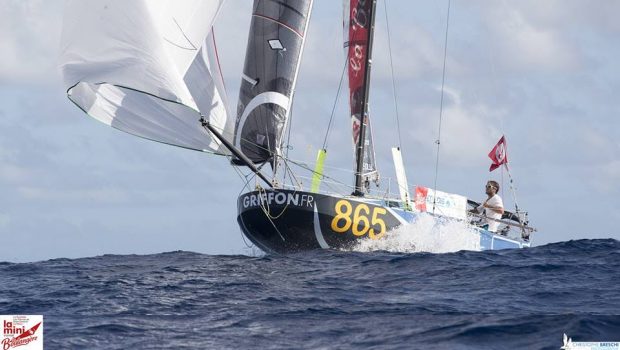

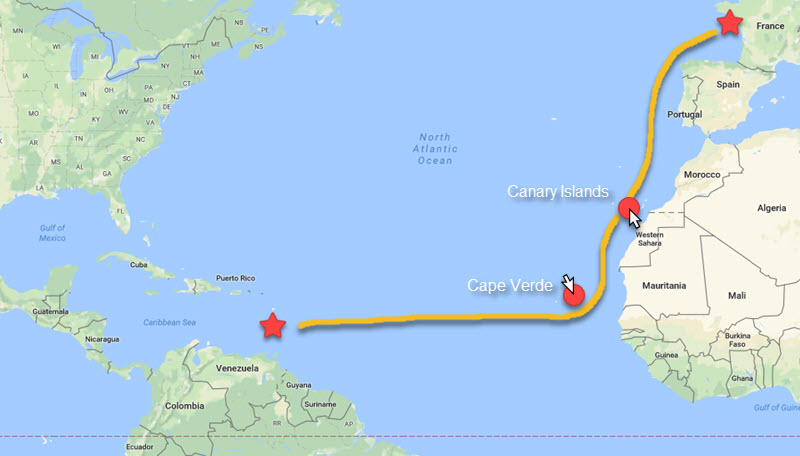


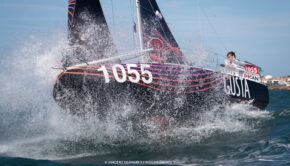
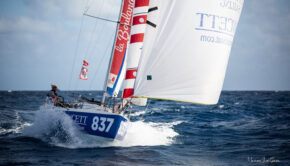
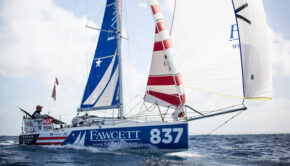
 We’ll keep your information safe.
We’ll keep your information safe.